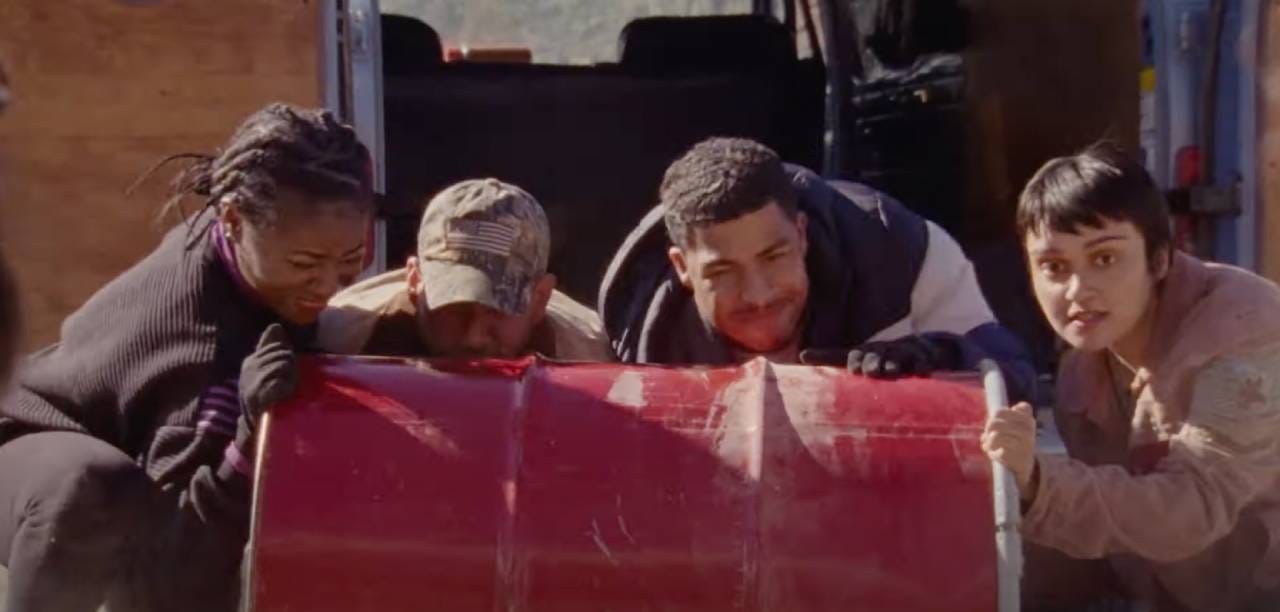How to Blow Up a Pipeline (2023)
Lesson 1: Have a plan
How to Blow Up a Pipeline (2023)
Directed by Daniel Goldhaber

In this terrorist-chic film — half heist movie, half gritty revenge thriller — a gang of young people execute a plot to wreak havoc on the oil market by blowing up an oil pipeline. The pipeline is in west Texas, presumably the source of WTI, “West Texas Intermediate” crude oil, a benchmark on the oil commodity market. Throw the export of WTI, or at least a portion of it, into chaos and the price of oil will spike, leading to instability in the market and raised doubts about the future of fossil fuels as an energy source.
I think that was the idea. It may not make practical sense, but as a symbolic action, blowing up a pipeline as a protest, if not a blow, against the fossil fuel industry is hard to beat. So this committed crew of activists-cum-terrorists pursues their goal with vigor.
The script provides shreds of backstory for each of the crew. One has had his family farm taken through eminent domain; one is sick from growing up adjacent to a refinery; another is tired of half measures, and so on. We don’t spend much time on these origin stories, and even less time on the process of how these disparate individuals contacted each other and decided to trust each other in a criminal conspiracy. It’s easy to fantasize about radical action; the hard part must be to gather conspirators you can trust, as is shown by the ease with which the FBI, over and over, entraps people set on wreaking destruction before they can act.
In this, the film misses a chance. The best part of “The Magnificent Seven,” to take one example, is the gathering of the seven; the sequence provides not only distinct characterization but also plants seeds of humor and pathos for the movie to cash in during the climax. In “How to Blow Up a Pipeline,” if you’re not paying strict attention, you don’t notice the distinguishing characteristics of each member of the cell, or they’re not tied to the character in a meaningful way. One of the crew, Michael (Forest Goodluck), is the bomb-maker, but his fingers tremble when he’s mixing volatile chemicals and wiring the bombs. The director isn’t skillful enough to turn this into much tension, but I missed the reason why his hands tremble in the first place. Most of the characters are under-written in similar ways.
Thus the movie relies on the caper itself, the sequence in which the crew is setting the explosives, for most of its length. The execution part of a caper movie, after the “gathering” sequence, is the other characteristic bit; it’s why you go to heist movies, to see the actual execution of the plan. The pleasure of this act usually relies on how clever or entertaining each element is. Here cleverness is replaced by simplicity and brute force. The conspirators have to strap a bomb to an exposed, open-air section of the pipeline, and they don’t have a clever plan to raise the heavy 55-gallon drum that constitutes the bomb the required two or three feet up; they hardly have a plan at all, just an assumption that the eight of them will be strong enough.
But I think that the point of the film is not so much the how-to spoken of in the title, but a discussion of the moral and philosophical reasons why it is, or is not, right to resort to violence against property in the struggle aginst climate change, or capitalism, or the gun industry, or whatever ails us. There’s only a little bit of a discussion of these questions in the film, as if the filmmakers expect the audience to be familiar with the arguments already. Certainly the members of the gang appear to already have sorted things out with each other.
Despite its lack of explicit discourse, the film probably will cause many viewers to start thinking through these questions on their own. (If you need help, read reviews of the book by Andreas Malm, of the same title, on which the film is based. A good example is this one.) All I can say is, if I’m ever involved in a criminal conspiracy, I hope the other members of the gang will be smarter and plan better than the people in this movie.
